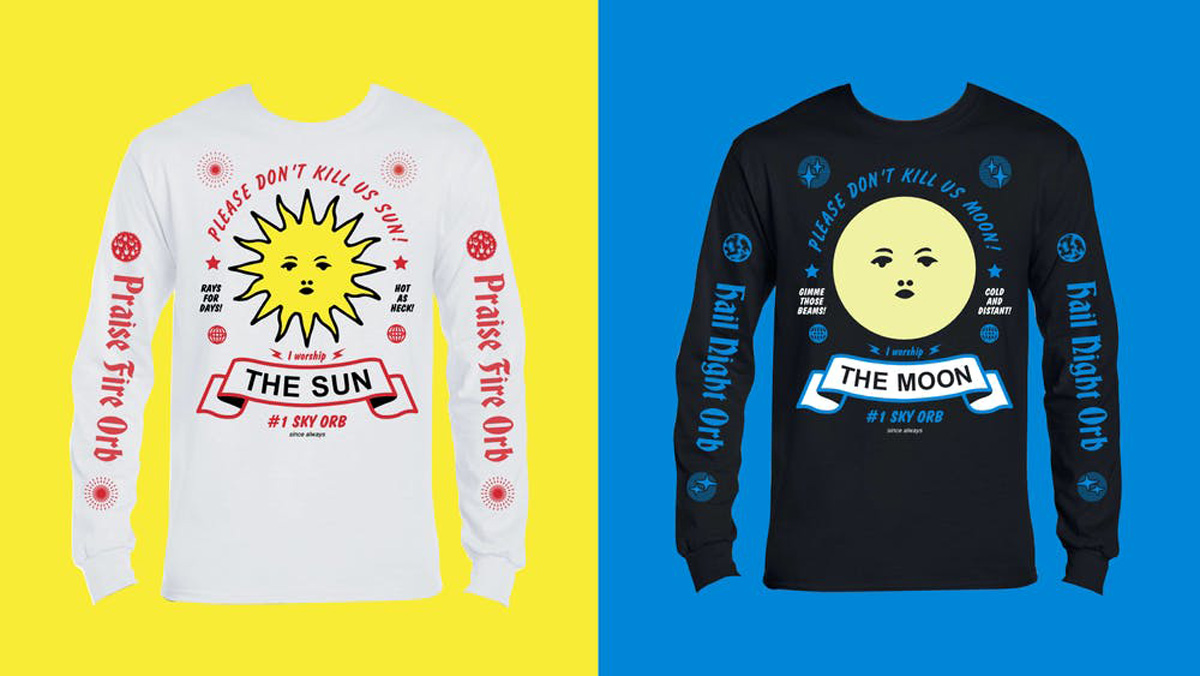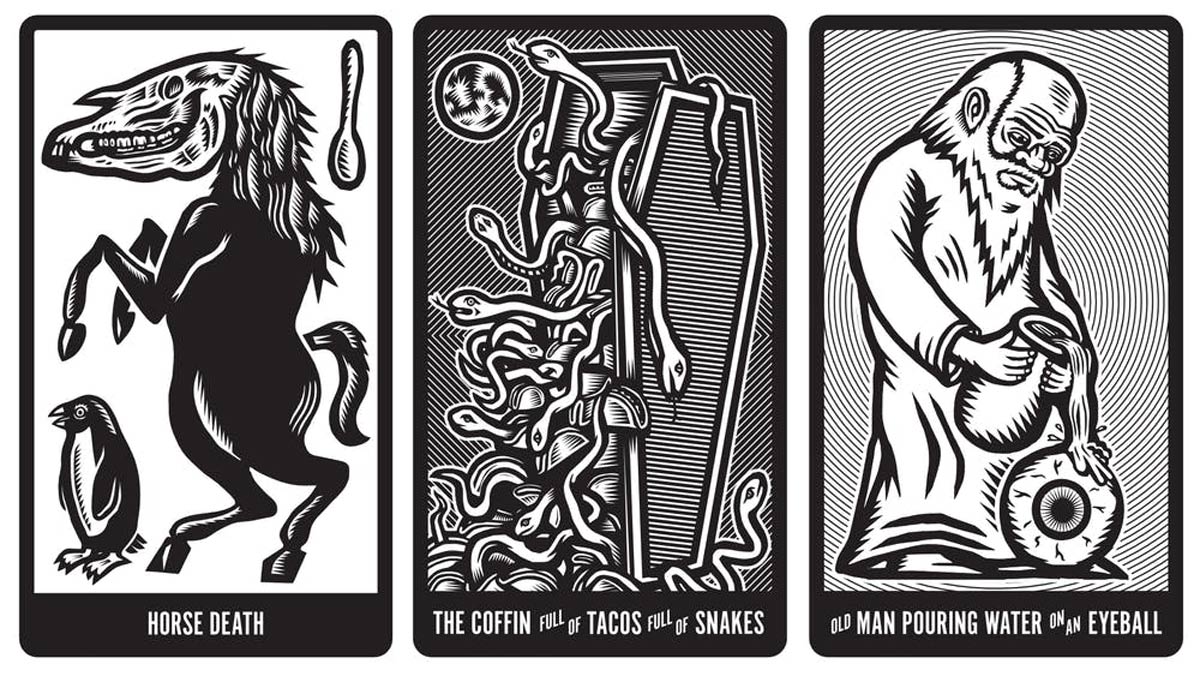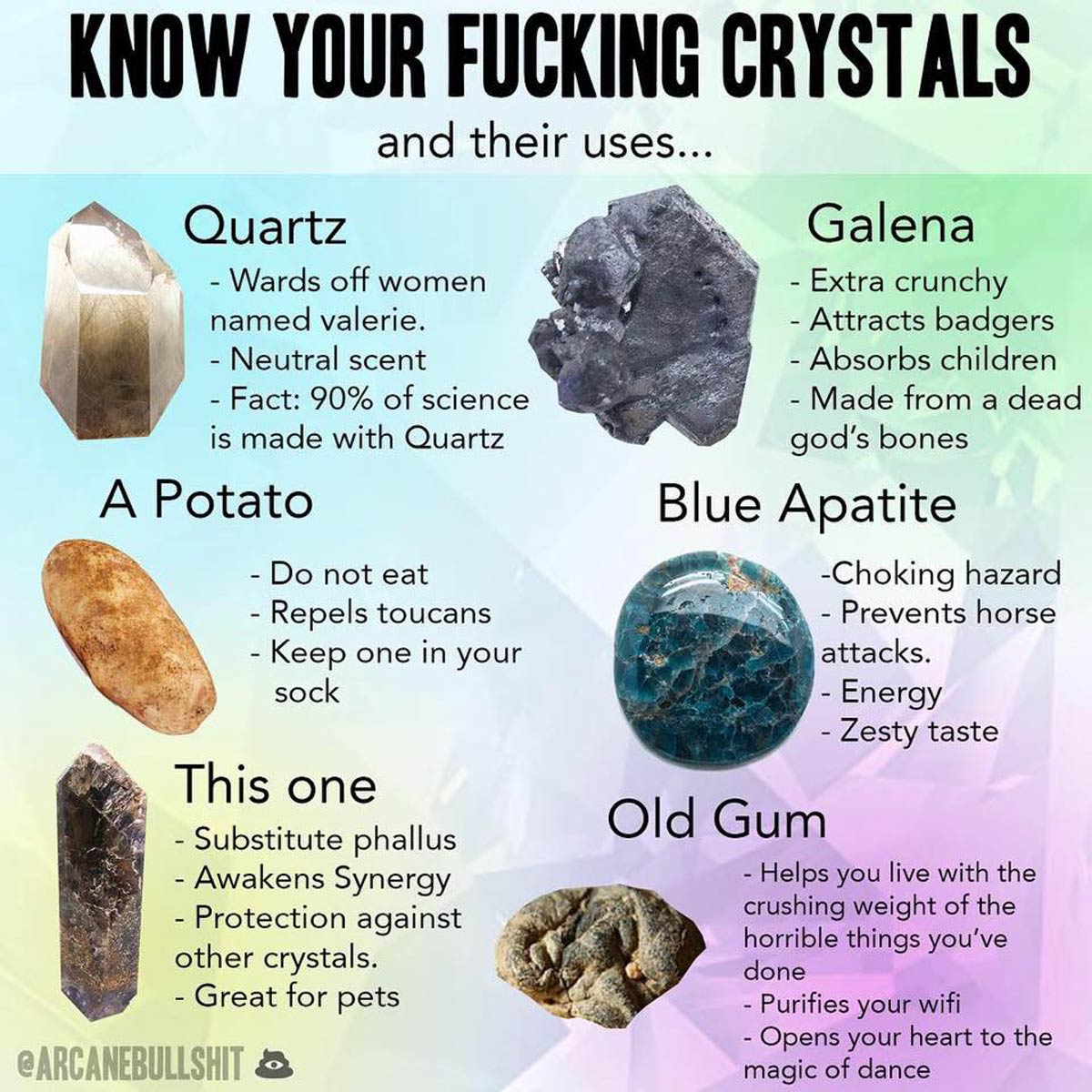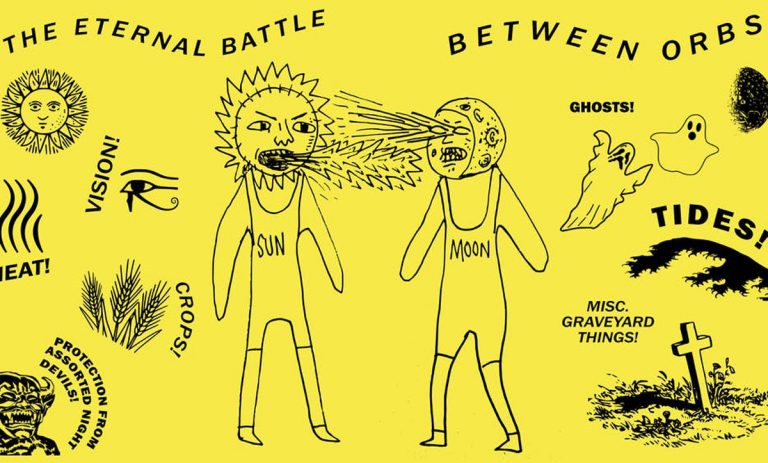A pagan take on surviving the impending dark age
Our collective reality is splintering. Whether you’re negotiating the COVID-19 precautions or buying near-identical wellness products from Gwyneth Paltrow’s Goop versus Alex Jones’ Infowars, you might have noticed we’re not all on the same page.
Arcane Bullshit creator Evan Doherty has been noticing this for quite some time. In his Kickstarter projects and occult memes on Instagram, he pokes fun at that dynamic by exaggerating it, creating a weird world of pre-scientific and pagan ideology. His latest Kickstarter campaign, for example, is a series of shirts pitting sun and moon worshippers against each other and asking both celestial bodies to spare us all.

The information superhighway isn’t going where we thought it might
“The world has gotten weird,” Doherty says. With more information at more fingertips than ever before, ‘truth’ becomes complicated. “People don’t trust science, people don’t trust the government, they have less and less faith in institutions of any kind,” Doherty says. “They want to make their own destiny.”
This directs some people towards extreme political ideologies, conspiracy theories, or even Armageddon supplies, but Doherty notices “even unawaked sheeple like me who wear a mask and trust the CDC feel the dominant narrative is not quite good enough, so they’re seeking out things that help them feel a little bit more in control.”
That has a number of effects on culture of course, but one he’s noticed is a growing interest in magical thinking, manifestations, crystals, and especially tarot—an incredibly popular theme on Kickstarter and a large portion of the wider category called ‘Witchstarter’.

Doherty channelled the occult on accident—his internet addiction has kept him there
“My attraction and involvement with the occult was at first purely aesthetic and satirical,” Doherty says. He made his first oracle deck more than a decade ago as a last-minute idea for something to sell at a friend’s zine fair table. Instead of traditional arcana cards like “The Magician” it features, for example, “The Former Child Star.” He continued handcrafting these decks up until 2018, when he realised a Kickstarter campaign could allow him to self-publish on a larger scale—and the all-or-nothing funding model would allow him to measure interest before placing a big order.
That Kickstarter project got support from well over a thousand backers, in part because Doherty’s romantic partner encouraged him to try promoting the campaign with some occult-themed parody memes.
Doherty describes himself as “really bad at social media,” but the second meme he ever made took off, clocking millions of views despite his relatively low following at the time. It’s about some of the…lesser-known benefits of crystals—“crunchy,” “neutral scent”—as well as what appears to be a potato and a wad of gum.

Since then, Doherty says he’s become “addicted to the engagement and response,” prompting him to research witchy topics as well as closely follow what he calls “surreal” meme accounts: @WelcometoMyMemePage, Special meme fresh, @BabaYagaBiscuits, @TrueWagner, and @PhysicalMemes are a few favourites.
The admiration is mutual. @ObviousPlant recently reached out for a collaboration. And though Doherty was “starstruck” when the bizarre, beloved account reached out, he’s even more surprised by his reception in occult communities.
Somehow not hexed yet
“I started out doing this parody fully like, ‘Oh, I’m going to get hexed by witches immediately’,” Doherty says. “It hasn’t been like that at all—not that I know of. I’ve been so embraced by that community and think of witches and occultists now more as my peers. So I feel like I have a responsibility to know what I’m talking about a little bit.”
Kickstarter director of music Meredith Graves (unofficial title: “head witch in charge”) cheered on Doherty’s launch, and Doherty says that the more time he spends talking to occult practitioners, the more he appreciates the intuition and creativity and imagination behind what they do.
“Even though sometimes the stuff I’m making is misinformed or not particularly deep,” he says, “I think what people connect to is that I am being super creative with it and I’m taking it in these new directions. It becomes a homage, even if it’s accidental.”
Sun vs Moon long-sleeved T-shirts are live on Kickstarter through February 28, 2021.





